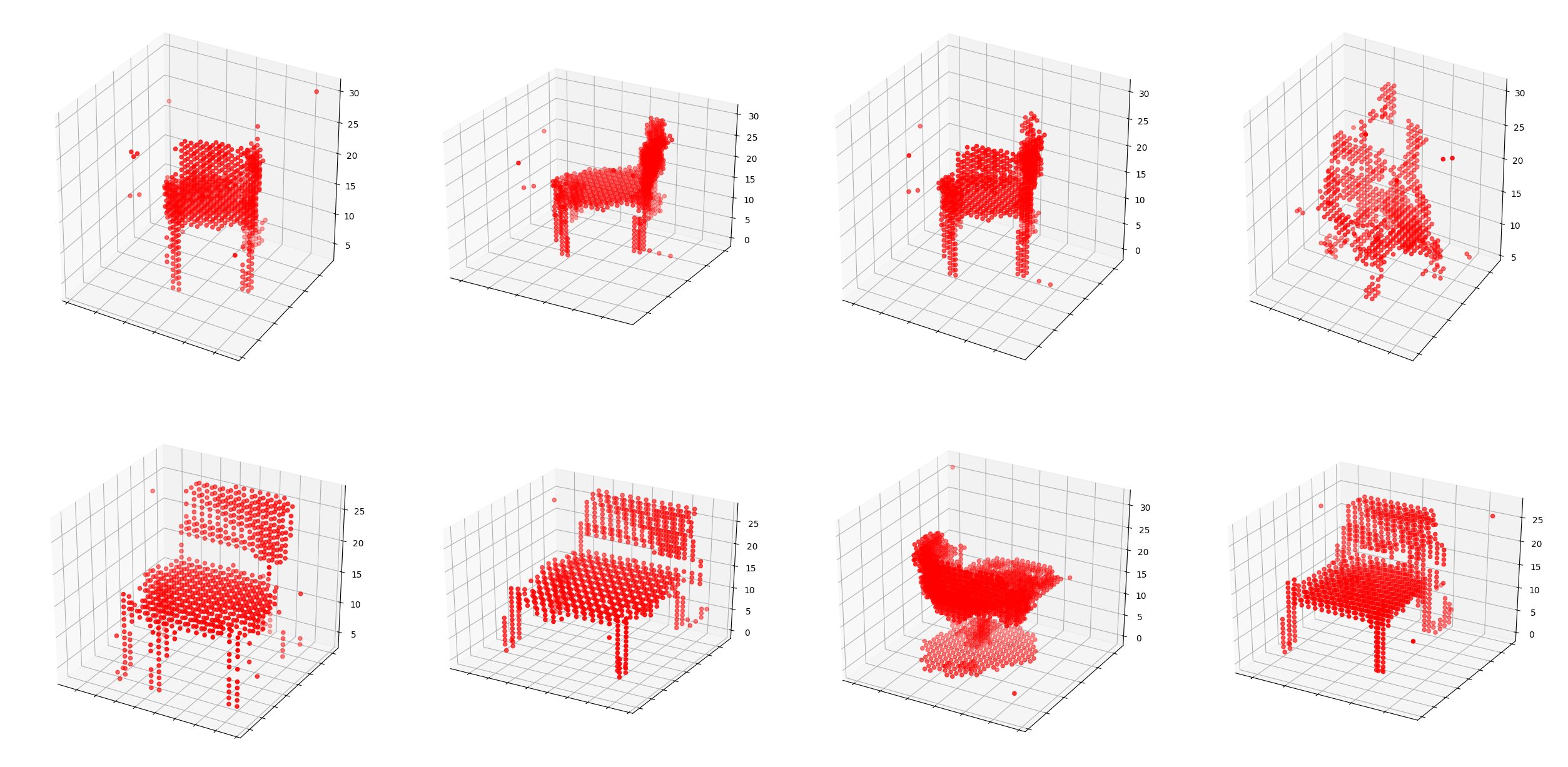This is a Pytorch implementation of the paper "Learning a Probabilistic Latent Space of Object Shapes via 3D Generative-Adversarial Modeling". I reference tf-3dgan and translate to pytorch code, Difference is that i use output layer of sigmoid, soft-labelling, learning-rate scheduler. I think all input voxels is positive( 0 or 1), so sigmoid is better than tanh. soft-labelling is good for smoothing loss, I use learning-rate decay to get better quality output
- pytoch
- scipy
- scikit-image
I use floydhub to train model
Floydhub is simple deeplearining training tool
They offer free-tier for 100h gpu server
pip install -U floyd-cli
#./input
floyd data init chair
floyd data upload
#./3D_GAN
floyd init 3dgan
floyd data status
floyd run --env pytorch --gpu --data [your data id] "python3 main.py"
This porject structure is fitted with floydhub structure, so parent directory contain input, output, 3D_GAN directory
I use some more trick for better result
- the loss function to optimize G is
min (log 1-D), but in practice folks practically usemax log D - Z is Sampled from a gaussian distribution [0, 0.33]
- Use Soft Labels - It make loss function smoothing (When I don't use soft labels , I observe divergence after 500 epochs)
- learning rate scheduler - after 500 epoch, descriminator's learning rate is decayed
If you want to know more trick , go to Soumith’s ganhacks repo.
1000 epochs



